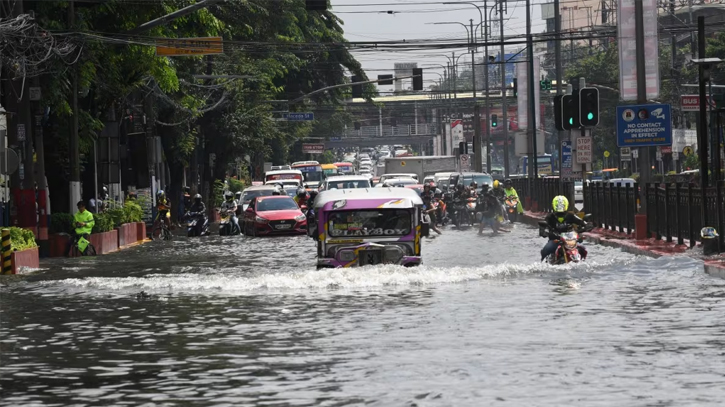
Photo : Collected
A severe storm battered the Philippines' most populous island on Sunday (25 May), dumping heavy rain and causing flooding that forced more than 8,000 people to flee their homes.
After making landfall on the central island of Samar late Friday, the first storm to hit the Philippines this year strengthened as it swept northwest to the main island of Luzon where it hovered near the capital Manila.
Severe tropical storm Ewiniar, which has been given the local name Aghon, dumped more than 200 millimetres (eight inches) of rain over parts of Quezon province in the 24 hours to 8:00 am (0000 GMT) on Sunday, the state weather forecaster said.
More than 6,000 people were forced to leave their homes in the province, figures posted on the provincial government's Facebook page show.
Floodwaters reached as high as three metres (10 feet) along the coast and power was knocked out in most areas, said provincial disaster officer Mary Joy Adam.
"The rain is gone now so we're expecting the floods will start to subside anytime soon," Adam said.
"The majority of the municipalities have power outages so our municipal rescuers are finding it hard to report to us."
Two people, including a 14-year-old boy, were killed by falling trees in separate incidents, Quezon disaster officials said.
In neighbouring Laguna province, disaster officials said more than 2,000 people had sought shelter as over half of the 30 municipalities flooded.
Photos shared by local government agencies on Facebook showed rescuers using inflatable boats to reach people stranded by the downpour.
Other photos showed large trees felled by strong winds that reached a maximum wind speed of 95 kilometres (59 miles) an hour as the storm headed northeast towards the Pacific Ocean.
About 20 storms and typhoons hit the country or its surrounding waters per year, damaging homes and infrastructure and killing hundreds of people.
The rainy season usually starts in June but authorities have warned it could be delayed by the El Nino weather phenomenon that has brought drought to swathes of the country.
Messenger/Mumu









